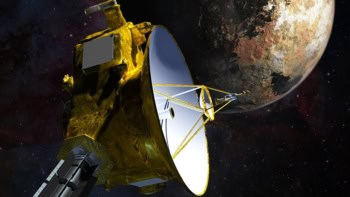by David Appell in Salem, Oregon, US
The Moon partially blocks the Earth’s view of the Sun at least twice, but the 21 August total solar eclipse – the “Great American Eclipse” – is “likely to be the single most viewed natural phenomenon in history of America”, according to Randall Milstein, an astronomy instructor at Oregon State University. He says a total of 324 million people live within a 9-hour drive of the path of totality.
While the total solar eclipse will span the US – the first to do so since 1891 – the UK will only see a slight partial eclipse, where a sliver of the Moon covers the Sun. Starting over Belfast at 7:37 p.m. BST and leaving Plymouth at 8:33 p.m. BST, this partial eclipse will extend to eastern continental Europe. But it will only be a 4% blockage at best – so be sure to use eclipse safety glasses!
For those who can’t see the eclipse directly, there are several live-streaming sites: NASA, the San Francisco Exploratorium, NASA’s Eclipse Ballooning Project streaming from up to 30 km in altitude, and others. Apps are available from NASA, the Smithsonian and more; follow along on Twitter with hashtags #eclipse2017, #solareclipse and #totalsolareclipse.
Eclipses have often been a chance to do unique science – recall Arthur Eddington verified Einstein’s prediction for the bending of light in a gravitational field during a total solar eclipse in 1919 – and this eclipse will be no exception. The Sun’s outer atmosphere, called the corona, will be viewable to a deeper depth than is allowed by an artificial eclipse, where a disc is placed in a telescope. One study will use the JAXA/NASA Hinode X-ray telescope to look for X-ray jets erupting from the Sun’s surface into the corona. The researchers hope the work will help solve the mystery of why the Sun’s corona is about a million degrees kelvin, while its surface is only 5800 K.
Another team of scientists will view the eclipse from 15 km altitude from two retrofitted WB-57 jet planes. Telescopes under the planes’ noses will capture the clearest images of the corona so far, for a total of seven minutes – over three times longer than seen from the ground. They’ll also make the first thermal images of Mercury, which is often obscured by the nearby Sun’s brightness, studying how temperatures vary on the surface.
An especially intriguing experiment to be conducted during the eclipse is MicroStart, which will simulate life’s ability to exist elsewhere, especially on Mars. Led by a research group at NASA’s Ames Research Center, and piggybacking on the flights of student teams involved in NASA’s Eclipse Ballooning Project, a small plate containing harmless but resilient bacteria will go aloft, with an identical plate kept on the ground. At altitude in Earth’s thinner, cooler stratosphere and above the ozone layer, the bacteria will be unprotected from the Sun’s radiation. During the eclipse the Moon will block certain solar UV rays that are less abundant in the atmosphere of Mars, and temperatures will fall further. The experiment will increase in the number of stratosphere microbiology missions tenfold.
And there are many more. Whether you’re in it for the wonder, the science or the festivities, the Great American Eclipse will make memories that last a lifetime.



